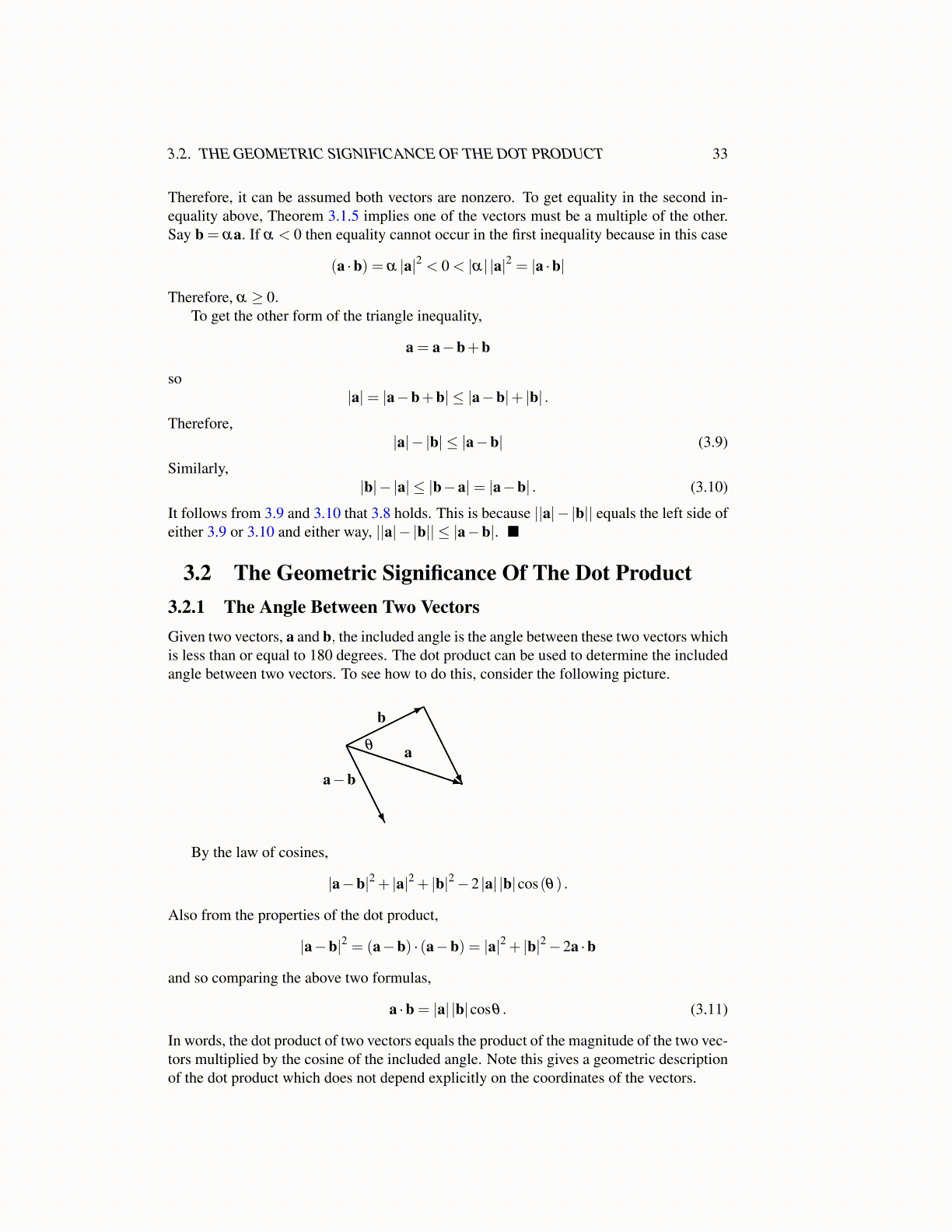
3.2. THE GEOMETRIC SIGNIFICANCE OF THE DOT PRODUCT 33
Therefore, it can be assumed both vectors are nonzero. To get equality in the second in-equality above, Theorem 3.1.5 implies one of the vectors must be a multiple of the other.Say b = αa. If α < 0 then equality cannot occur in the first inequality because in this case
(a ·b) = α |a|2 < 0 < |α| |a|2 = |a ·b|
Therefore, α ≥ 0.To get the other form of the triangle inequality,
a = a−b+b
so|a|= |a−b+b| ≤ |a−b|+ |b| .
Therefore,|a|− |b| ≤ |a−b| (3.9)
Similarly,|b|− |a| ≤ |b−a|= |a−b| . (3.10)
It follows from 3.9 and 3.10 that 3.8 holds. This is because ||a|− |b|| equals the left side ofeither 3.9 or 3.10 and either way, ||a|− |b|| ≤ |a−b|. ■
3.2 The Geometric Significance Of The Dot Product3.2.1 The Angle Between Two VectorsGiven two vectors, a and b, the included angle is the angle between these two vectors whichis less than or equal to 180 degrees. The dot product can be used to determine the includedangle between two vectors. To see how to do this, consider the following picture.
b
a
a−b
θ
By the law of cosines,
|a−b|2 + |a|2 + |b|2−2 |a| |b|cos(θ) .
Also from the properties of the dot product,
|a−b|2 = (a−b) · (a−b) = |a|2 + |b|2−2a ·b
and so comparing the above two formulas,
a ·b = |a| |b|cosθ . (3.11)
In words, the dot product of two vectors equals the product of the magnitude of the two vec-tors multiplied by the cosine of the included angle. Note this gives a geometric descriptionof the dot product which does not depend explicitly on the coordinates of the vectors.